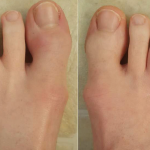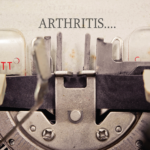4. Spinal Inflammation
Abstract 0503: Raychaudhuri et al.4
Axial joint involvement is a prominent feature of PsA and can coexist with the various forms of peripheral joint involvement. The frequency of axial disease in PsA has been unclear because of the uncertain relationship between imaging findings and symptomatology. As another approach to elucidate spinal inflammation in PsA, Raychaudhuri and colleagues used total body (TB) PET/CT with an 18F-FDG radiotracer. This approach assesses glucose metabolism and can therefore measure inflammation.
This study involved 25 PsA patients, of whom eight had symptoms of inflammatory low back pain, and determined inflammation in both joints and entheses. As the data indicate, PET/CT imaging detected axial abnormalities in 21 of the 25 patients (84 %) involving various joints alone or in combination. Twenty percent of patients had evidence of sacroiliac joint involvement, either unilateral or bilateral but asymmetric. Involvement of the entheses was also high, at 80%.
These findings are, perhaps, surprising because relatively few of the patients had inflammatory back symptoms; one of the patients with inflammatory low back pain, however, had a negative MRI but a PET scan positive for sacroiliitis. For the spine, imaging is inherently difficult because of the complex anatomy of this structure, as well as the frequency of findings by conventional imaging in the general population. Nevertheless, the burden of spine disease by PET scans in this study is impressive, although the role of this type of imaging in routine patient care is not yet clear.
Future studies will be important in assessing the relationship between axial and peripheral disease (both arthritis and enthesitis) as well as determining any differences in treatment response of the arthritis and the enthesitis.
5. ‘Fibromyalgia-ness’
Abstract 0483: Macfarlane et al.5
Like other forms of inflammatory arthritis, PsA is a painful condition and, like other forms of inflammatory arthritis, PsA is associated with “fibromyalgia-ness.” Indeed, studies suggest one in five patients with PsA have what can be termed “co-morbid fibromyalgia.”
Because the frequency of fibromyalgia in PsA is so much higher than that of the general population, this pattern of symptomatology seems inherent or intrinsic to disease rather than a co-morbidity. The frequency of 20% is similar to that in other inflammatory diseases and suggests that inflammation can lead to central sensitization, the hallmark of fibromyalgia. Fibromyalgia has also been called nociplastic pain.
To assess the frequency of fibromyalgia in PsA, Macfarlane and colleagues analyzed data from the British Society for Rheumatology Psoriatic Arthritis Register (BSR-PsA). The studies included 148 patients with PsA who met criteria for the fibromyalgia polysymptomatic distress score or the fibromyalgia 2016 criteria and explored the relationship between fibromyalgia and a series of demographic variables, as well as clinical and patient-reported outcomes.


